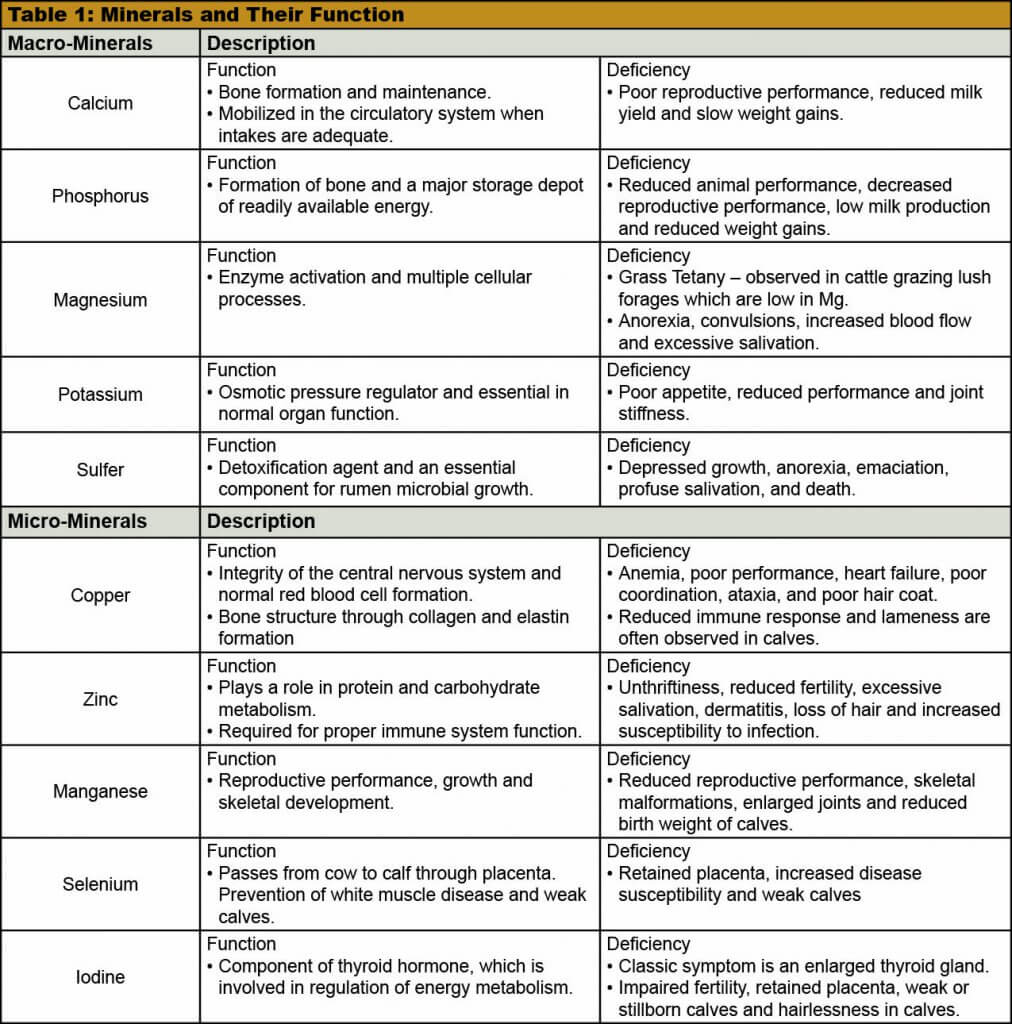Kristin Thompson, M.Sc. Ruminant Nutrition Associate and Kathleen Shore, M.Sc. Ruminant Nutritionist New-Life Mills, A division of Parrish & Heimbecker, Limited
Minerals are an essential part of a nutritionally balanced diet for beef cows. Unfortunately it is also a part of the diet that is overlooked due to the small inclusion rate. Those small inclusions are necessary to keep a cow running efficiently making her capable of producing healthy, lively calves.
The Economics
Minerals, such as calcium, phosphorus, selenium and manganese all play a key role in maintaining herd fertility. When herd reproduction is compromised, the economic losses can be huge. A missed conception causes a loss of 52.5 lbs per calf for every 21 day heat cycle missed (2.5lbs gain/day x 21 days). At a calf selling price of $1.80/lb, that is a loss of $94.50/calf when sold at weaning ($1.80/lb x 52.5lbs). Multiply that by 150 calves and that equals $14,175 loss. An on farm mineral program ensures that the cow has everything she needs to stay healthy, digest her nutrition and cycle regularly.
Similarly, if a calf is born in the first 21 day cycle, but with low vitality due to inadequate supply of minerals to the dam, that calf will struggle to grow, develop and finish. Extra medication and poor rates of gain means more feed goes into the calf for the same gain as a healthy calf.
Mineral Considerations
When it comes to choosing the “right” mineral for your herd there is no one-size-fits-all supplementation program. Macro-minerals are required in large amounts by the animal and have various functions within the body (see Table 1). Micro-minerals or trace minerals, although essential, are required in smaller portions. Every mineral has a role in making an animal more productive, healthier and ultimately more profitable. Minerals work together to create nutritional balance so over or under feeding one mineral may cause an imbalance in another. If Calcium is overfed (limestone) it can actually bind other minerals and make them unavailable – more is not always better. Calcium is also linked to phosphorus so that ratio is very important. The optimal ratio is 1:1 to 4:1. Commercial mineral products are often named according to that ratio eg a 2:1 is 2 calciums for every 1 phosphorus. Another example is when copper or selenium are overfed – zinc can become deficient. As you can see in Table 1 zinc is involved in metabolism, making sure that feed is digested and used by the animal. It also helps support the immune system. A deficiency can lead to having to feed more to the cow to get the same performance and if deficiency is prolonged will just tire her out and make her more likely to fall ill.

Testing Your Feed
Knowledge of mineral function as well as availability within on farm feedstuffs, including pasture, is important when choosing a commercial mineral. Forages are often a good source of calcium for beef cattle. In cereal grains, phosphorus levels are higher. Consult your nutritionist for proper stored forage and grain sampling techniques and recommended analysis.
The grazing season means cattle have the opportunity to consume large quantities of lush pasture, which can be low in magnesium (remember grass tetany). Copper availability tends to be low in Saskatchewan pastures and is hugely impacted by water quality, particularly iron and/or sulphate levels. Forage type will also impact mineral levels depending on whether it is tame versus native pasture that is being grazed. Despite forage type, mineral concentrations decline from spring to fall (Saskatchewan Forage Council, 2014). Therefore, forage testing conducted in the spring will not be representative for the year. Forage testing should be done several times during the grazing season as well as through the winter on stored forages. When sampling pasture grasses, ensure you cut the grass stem off at grazing height. It is also important to avoid collecting samples of plants that cattle are not likely to be consuming. The idea is to collect a representative sample of the standing forages that the cattle are grazing.
Points to Remember!
A mineral supplementation program is an essential part of beef cattle production!
- A year round mineral supplementation program is essential for optimal herd health
- Test your on farm feed
- Select a mineral that compliments what is already on farm
This article was also printed in the February 2018 issue of Canadian Cattlemen.
